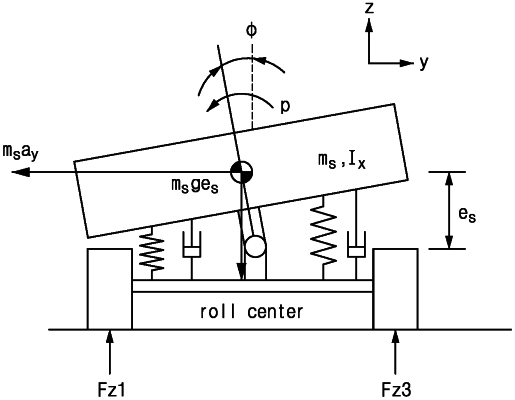| CPC B60W 30/045 (2013.01) [B60W 10/08 (2013.01); B60W 10/20 (2013.01); B60W 10/22 (2013.01); B60W 2510/083 (2013.01); B60W 2520/40 (2013.01); B60W 2710/22 (2013.01); B60W 2720/14 (2013.01)] | 19 Claims |

|
1. A device for improving a turning motion of a vehicle, the device comprising:
a turning characteristic determination module configured to determine whether a turning characteristic of the vehicle is an understeer (US) state or an oversteer (OS) state according to information for identifying a travel situation of the vehicle;
a turning characteristic improvement module configured to determine a target yaw moment required to improve the turning characteristic of the vehicle and determine a motor control amount for realizing the determined target yaw moment to control whether to brake or drive an electric motor of the vehicle; and
a cooperative control module configured to control a damping force of an electronic controlled suspension (ECS) to cause a load movement of the vehicle configured for contributing to the realization of the target yaw moment,
wherein the turning characteristic improvement module includes a motor control amount determining device, and
wherein the motor control amount determining device is configured to represent the target yaw moment as a sum of a lateral force Fy acting on a tire and a driving force Fx, then, determine a motor torque including a braking torque or a driving torque that is realized at the electric motor from a relational expression between the driving force Fx and a vehicle speed V representing an output P of the electric motor and a relational expression between the motor torque Tm and an angular speed ωm, and then, determine the determined motor torque as the motor control amount.
|